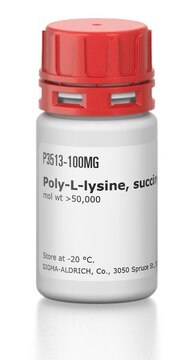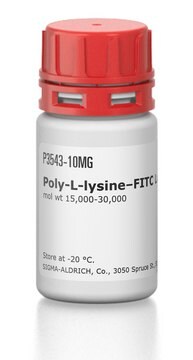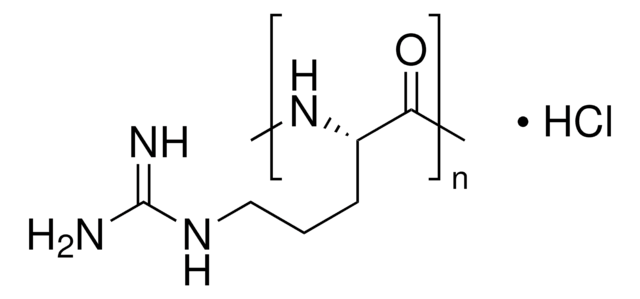P9404
Poly-L-lysine hydrochloride
suitable for cell culture, Mol wt >30,000
Sinónimos:
L-Lysine hydrochloride homopolymer
About This Item
Productos recomendados
Nombre del producto
Poly-L-lysine hydrochloride, mol wt >30,000
form
powder
Quality Level
mol wt
>30,000
technique(s)
FTIR: suitable
cell culture | mammalian: suitable
color
white to light yellow
storage temp.
−20°C
¿Está buscando productos similares? Visita Guía de comparación de productos
Application
Analysis Note
Other Notes
Storage Class
11 - Combustible Solids
wgk_germany
WGK 3
flash_point_f
Not applicable
flash_point_c
Not applicable
ppe
Eyeshields, Gloves, type N95 (US)
Elija entre una de las versiones más recientes:
¿Ya tiene este producto?
Encuentre la documentación para los productos que ha comprado recientemente en la Biblioteca de documentos.
Los clientes también vieron
Artículos
Layer-by-Layer (LbL) Assembly, A "Gentle Yet Flexible" Method Toward Functional Biomaterials
Humankind has utilized protein materials throughout its existence, starting with the use of materials such as wool and silk for warmth and protection from the elements and continuing with the use of recombinant DNA techniques to synthesize proteins with unique and useful properties.
Nuestro equipo de científicos tiene experiencia en todas las áreas de investigación: Ciencias de la vida, Ciencia de los materiales, Síntesis química, Cromatografía, Analítica y muchas otras.
Póngase en contacto con el Servicio técnico








